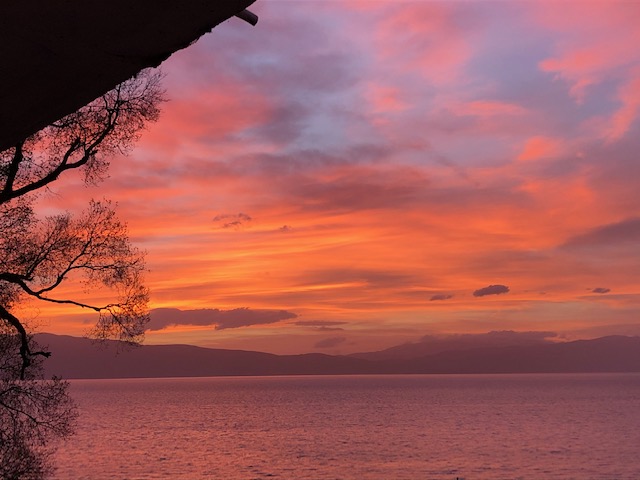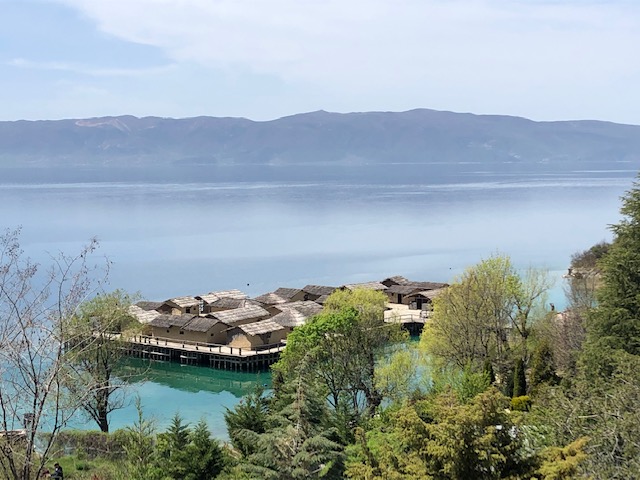7 Top Things to Do in North Macedonia
The Balkans is a vastly underrated region of Europe that receives far fewer visitors than Western European nations. And the landlocked country of North Macedonia (formerly the Republic of Macedonia) sees fewer tourists than any other Balkan country. That’s a shame since this off-the-beaten-path destination boasts beautiful nature, fascinating history, and hospitable locals.
Sandwiched between Serbia, Kosovo, Bulgaria, Greece, and Albania, North Macedonia will delight any traveler. Nature lovers, history buffs, and foodies can all find enjoyable activities for an unforgettable vacation. And in my humble opinion, North Macedonia is among the world’s most underrated wine destinations.
During my Balkan trip, I spent three weeks traveling around this largely undiscovered gem. Here are my top things to do in North Macedonia and recommendations for your visit.
Climb Magaro Peak



Located in Galičica National Park, Magaro Peak sits at an elevation of 2,255 meters between Lake Ohrid and Lake Prespa. The trek starts at around 1,600m and ascends through peaceful forests before rising into alpine meadows. Now, when I completed the hike in early May, blankets of snow covered the hillside above the tree line.
While you can start from the village of Trpejca, you’ll save time driving the road that connects Lake Ohrid and Lake Prespa. The climb to Magaro Peak begins from a small parking lot at the highest point of the road. Expect a short but exhilarating ascent with thrilling views of verdant forests, limestone cliffs, and mountain pastures. And from the summit, you have an unbelievable aerial view of Lake Ohrid and Lake Prespa at the same time.


Hang Out in Trpejca

Just because North Macedonia is landlocked, don’t assume you can’t enjoy a beach getaway. Nicknamed the “Macedonian Saint-Tropez,” Trpejca sits at the base of Galičica Mountain beside Lake Ohrid. The sleepy fishing village now hosts summer tourists looking to swim in Lake Ohrid’s crystal-clear waters. Spend lazy days lounging on pebble beaches or taste delicious seafood caught from local fishermen.
Trpejca hosts a chill vibe, so tourists searching for tranquility can escape the crowds of nearby Ohrid. Climb the hill overlooking the village for beautiful pictures of rocky cliffs, emerald waters, and snow-capped mountains. And the sunsets from this gorgeous location on Lake Ohrid are some of the most breathtaking I’ve ever witnessed.




Cruise Lake Ohrid

Lake Ohrid was among my favorite places anywhere in the Balkans. Situated on the Albania-North Macedonia border, Lake Ohrid is one of the oldest and deepest lakes in the world. Earning status as both a natural and cultural UNESCO World Heritage Site, Lake Ohrid is a Macedonian treasure. The best way to explore the beauty of Lake Ohrid is to book a boat cruise from Ohrid.
Several companies book tours from the Port of Ohrid and visit fascinating sites along the lake. Lake Ohrid cruises often stop at St. Naum Monastery, Ohrid Old Town, Struga, Trpejca, Kaneo, and the Bay of Bones. And with mountain vistas, sparkling waters, and idyllic beaches surrounding your vessel, cruising Lake Ohrid is a magical experience.

Explore Matka Canyon



Matka Canyon is the easiest day trip from Skopje when you’re in the nation’s lively capital. Just 15 km from Skopje city centre, Matka Canyon hosts outdoor enthusiasts wishing to escape the urban hustle. Limestone cliffs tower above the emerald waters of this picturesque artificial lake. Start your adventure with a boat cruise through the canyon for stunning views of craggy cliffs overlooking the water.
Many cruises also stop at Vrelo Cave, where you can wander stalagmites and underwater pools. Vrelo and other underwater caves at Matka Canyon also attract divers researching the mysteries beneath the surface. Hikers can access trails along the canyon walls that venture to medieval monasteries. During balmy days, it’s possible to swim in Lake Matka but at your own risk. After an adventurous day inside the canyon, you can have a picnic beside the lake or enjoy a sumptuous meal at Canyon Matka Restaurant.


Hit the Trails at Vodno



For avid trekkers, Vodno is the best place to visit in Skopje. Vodno Mountain overlooks Skopje and rises to its maximum elevation of 1,066 meters. From the mountaintop, there’s a spacious picnic space with sensational cityscapes and mountain vistas. Hikers frequent the area to begin or end day hikes around Skopje. Situated atop Vodno Mountain is the 66-meter Millennium Cross that symbolizes 2,000 years of Christianity in Macedonia.
To access the top of Vodno, you can either ride the Vodno cable car or hike through dense forests. Since I prepared for a day hike, I decided to wander into the thick foliage. After eating a quick snack facing snowy mountains, I chose to hike from Vodno to Matka Canyon. The trail traverses downhill for around 13 km through pine forests, green hills, and wildflower fields. And accessing Matka Canyon from the backside offered magnificent views you can’t get from inside the canyon.
Wander the Bay of Bones

Returning to Lake Ohrid, the Bay of Bones Museum piqued the history buff side of me. The Bay of Bones transports you back in time to recreate a village of stilt houses from the Bronze and Iron Ages. Situated on the Ploca Micov Kamen, the museum provides insight into prehistoric life on Lake Ohrid. Visitors can walk inside authentic dwellings of those who lived here from 1200 to 700 B.C.


The archaeological complex also has a collection of historic artifacts found during the excavation. Walk around the exhibits to find ceramics, stone tools, fishing equipment, and animal bones from the ancient settlement. The site also houses a reconstructed Roman military fortification that rests on the hilltop above the stilt-house village. With emerald-blue waters, forest-clad mountains, and orange cliffs surrounding the museum, the Bay of Bones makes an amazing day trip from Ohrid.



Hike Around Skopje Fortress

Dating to the 6th century A.D., Skopje Fortress, also called Kale Fortress, is among the most recognizable structures of Skopje. The fortification overlooks the Vardar River and offers stunning views of the city. While much of its early history remains unknown, it’s believed the original fortification dates to the reign of Byzantine Emperor Justinian I. The Skopje Fortress was also where Stefan Dušan declared Skopje the capital of the Serbian Empire during the 14th century.
While the fortress suffered damage during the 1963 Skopje earthquake, restoration projects repaired the outer wall and defensive towers. Walking the perimeter of the fortress gives you an idea of Skopje’s strategic importance throughout history. Standing along its mighty stone wall and reconstructed towers provide glimpses of the Old Bazaar, Vodno, and Macedonia Square.






